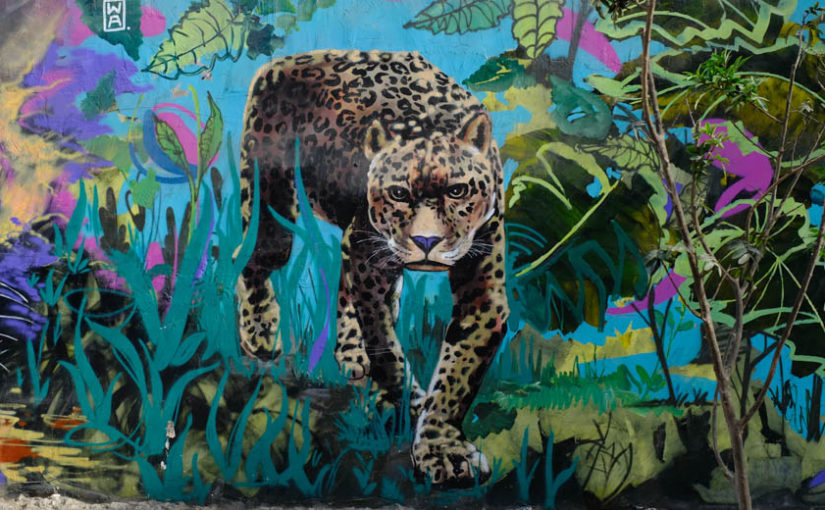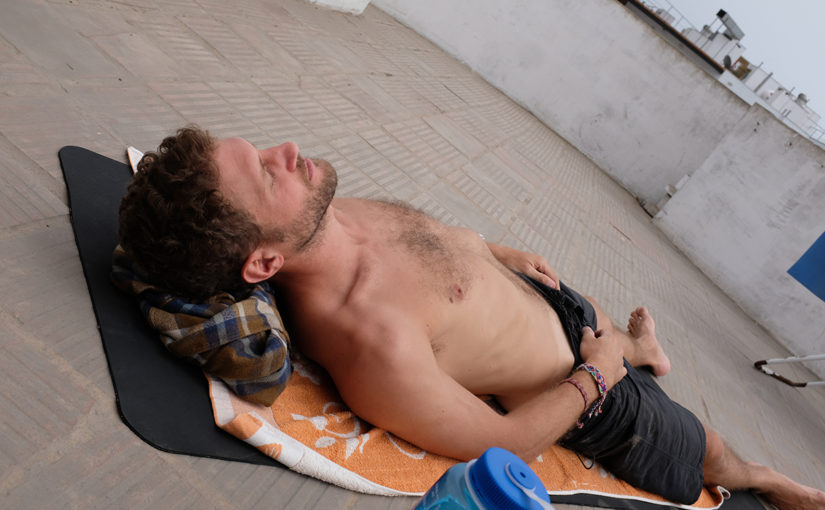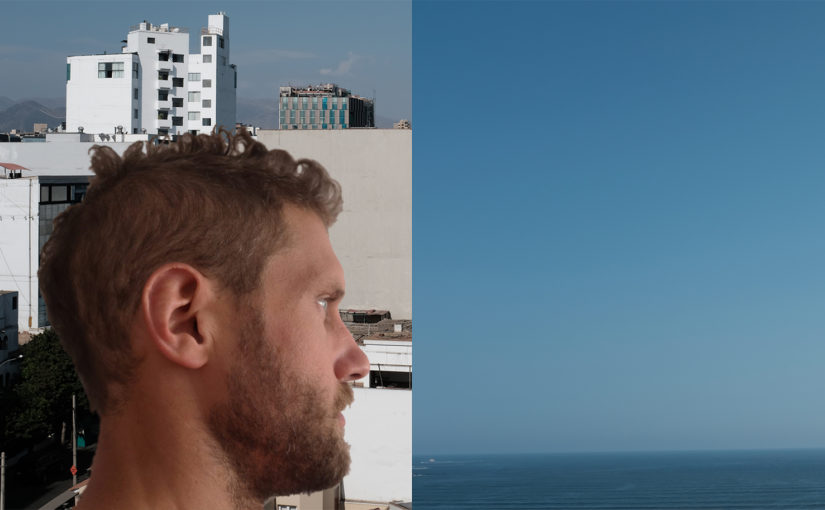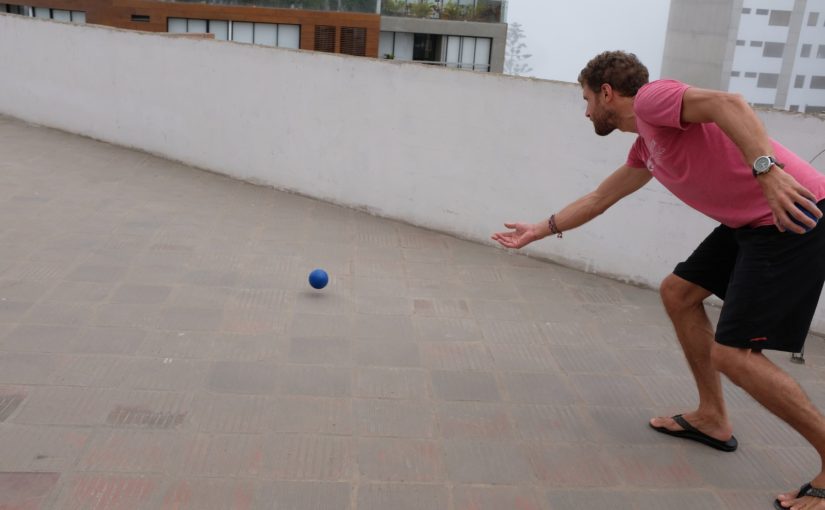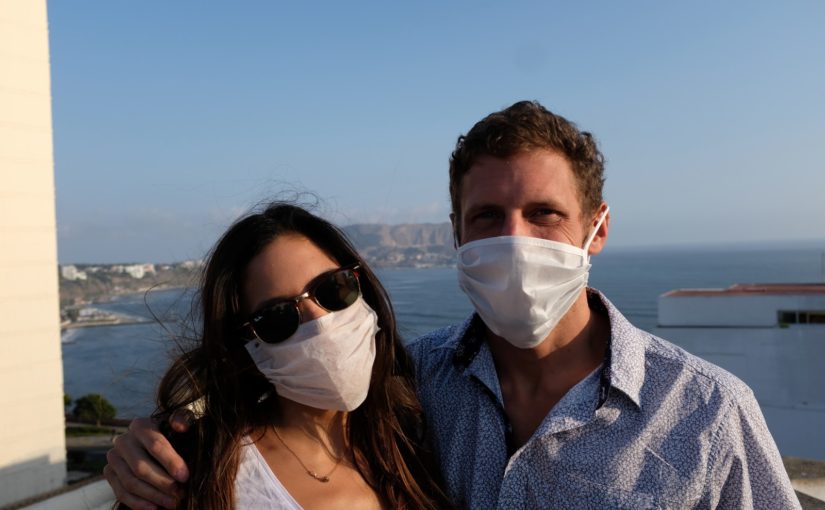Since the start of the quarantine in Peru I have been putting a small recorder out on my windowsill to capture a moment in time that has been a mental and sonic journey more than a physical or visual one. It has been strange, mundane, horrible and beautiful in equal proportions. Here is soundscape in chronological order that is structured to capture my experience on Calle Porta, Miraflores, Peru. The music is from wandering musicians that have taken to the streets to busk and earn money. The background to the entire soundscape is one of the largest surf swells of the year recorded around 5AM at first light.
essential banana bread
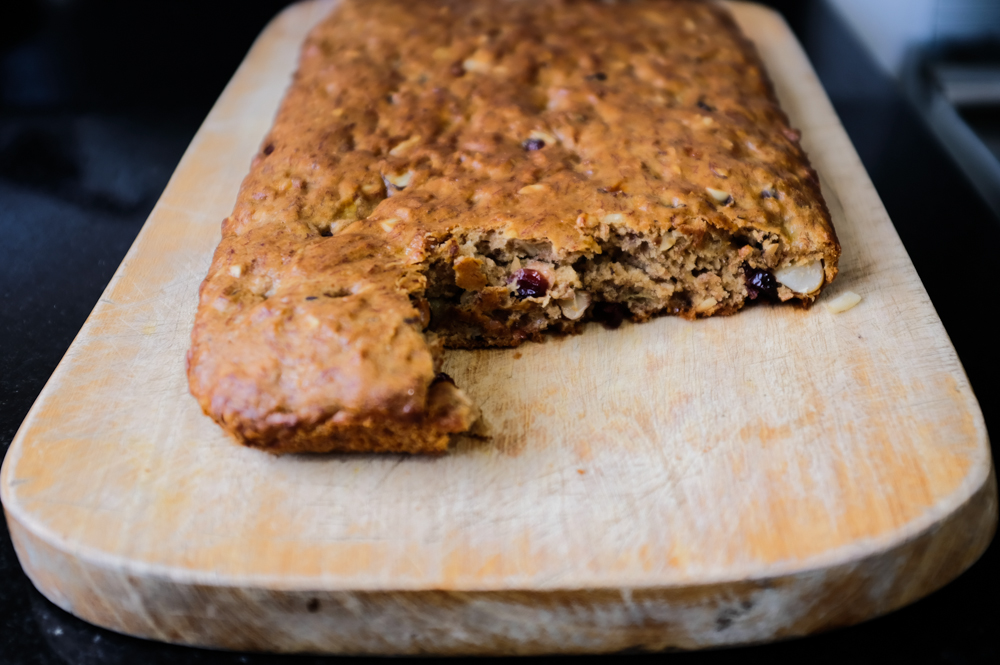
The world at this moment is filled with talk of essential activities. What is an essential activity? It is quite clear at this moment that we could do without or reduce the prevalence of many of the activities that are currently being classified as essential and the world would be a better place. Baking a vegan banana bread for your individual consumption would not be considered an essential activitiy by any standard, but the world would undoubtedly be a better place if there were more breads of this sort being baked and shared. I am comfortable saying this despite baking a bread of this sort requiring one to engage with a defective global economy and purchase ingredients that have a profound environmental and human impact. If you do the calculations, which I have, the ratio of joy:violence in a loaf of vegan banana bread is quite high.
So, I propose that you think about these questions from Virgina Woolf while your banana bread cooks in the oven for 50 minutes at 180C or 350F:
“Let us never cease from thinking — what is this ‘civilization’ in which we find ourselves? What are these ceremonies and why should we take part in them? What are these professions and why should we make money out of them? Where in short is it leading us, the procession of the sons of educated men?”
Ingredients
- 4 overripe bananas (~9 of the small bananas)
- 2/3 cup dark brown sugar (I use panela)
- 1/3 cup vegetable oil of some kind
- Coconut oil to grease the pan
- 2 cups all-purpose flower
- 3.5 teaspoons of baking powder
- 1 teaspoon cinnamon
- 1 teaspoon salt
- 1 cup chopped nuts. (I use Brazil nuts and walnuts)
- 1 cup dried cranberries
- Chop up nuts and toast them in a pan for 3-5 minutes on medium heat until golden-brown. Set them aside.
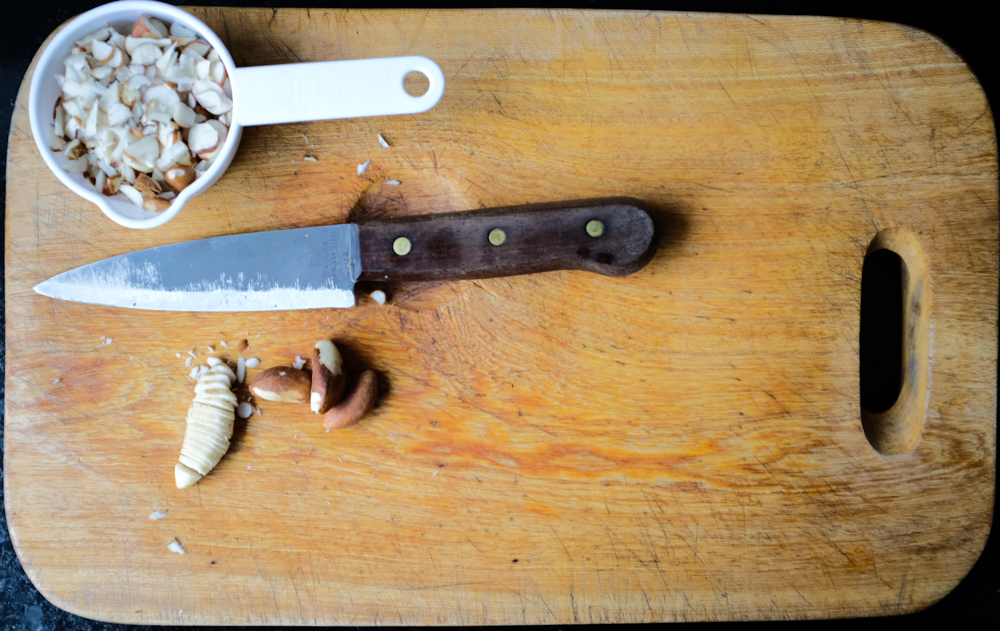
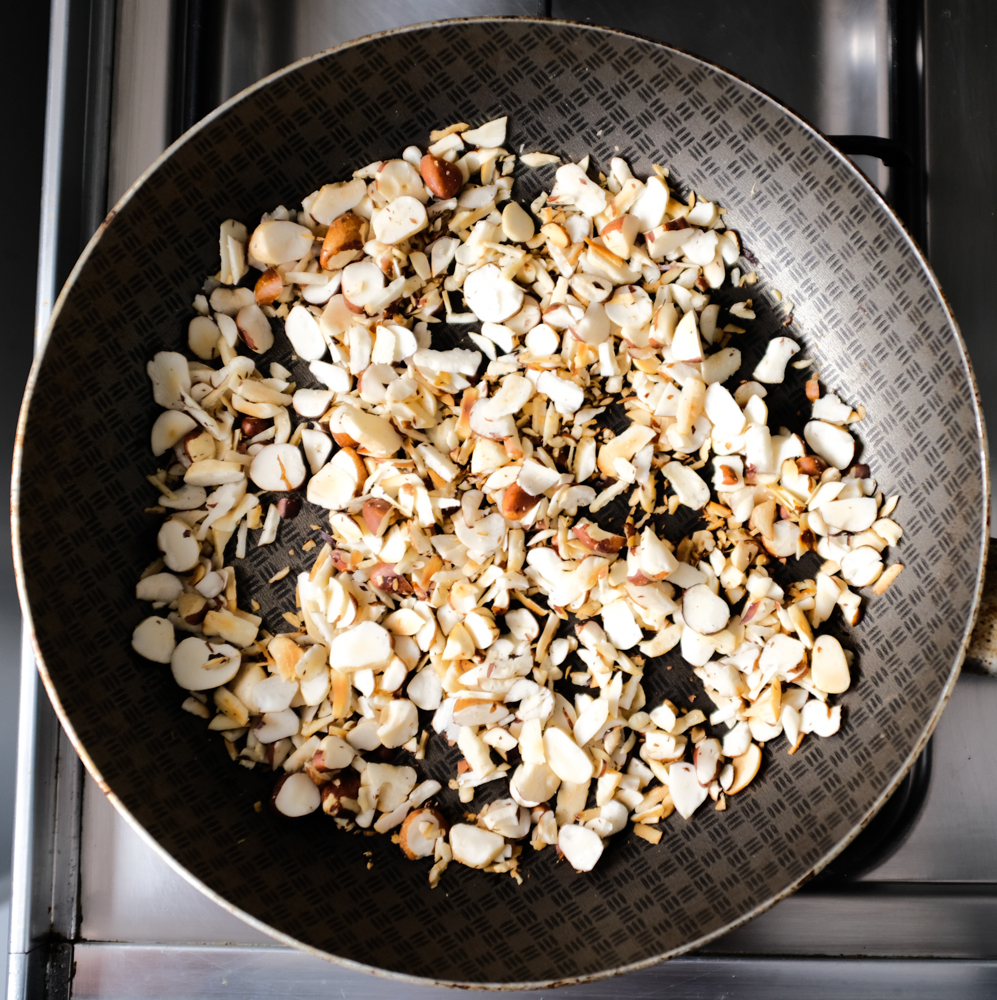
- Preheat the oven to 180C or 350F.
- Mash bananas in large bowl.
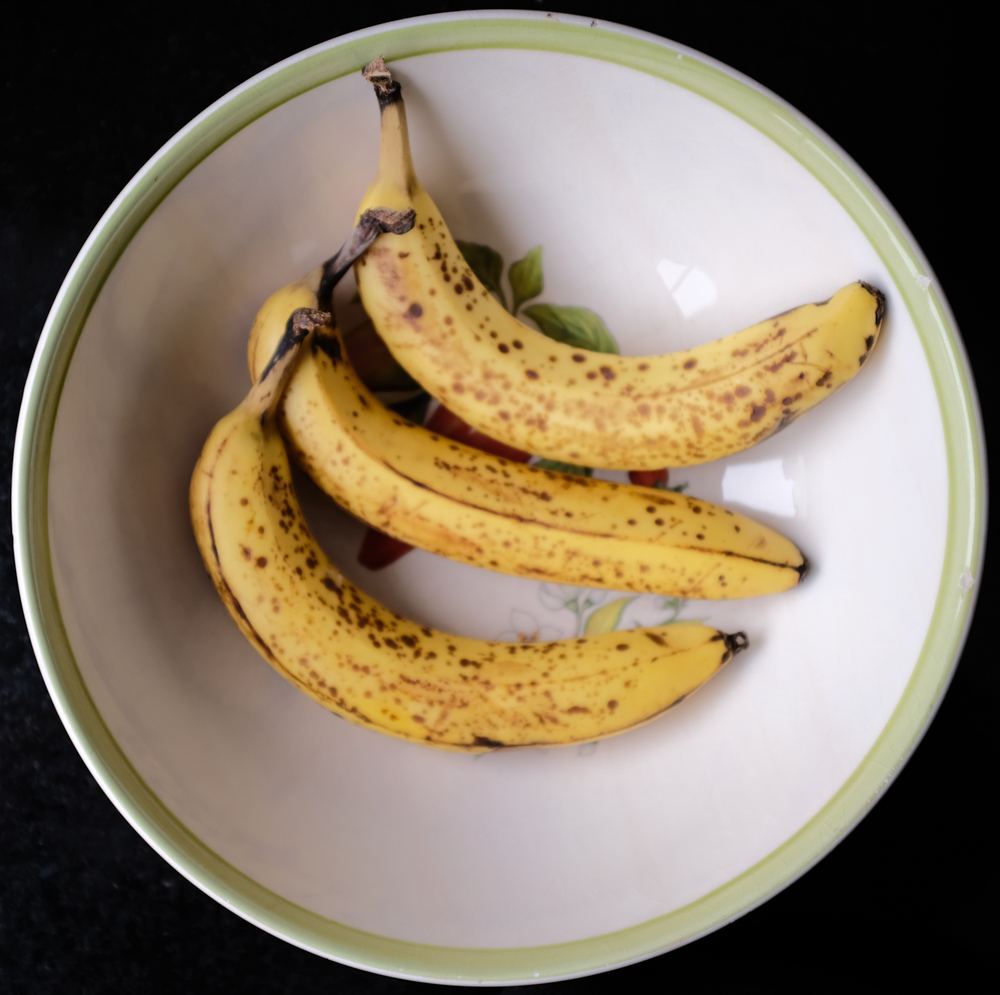
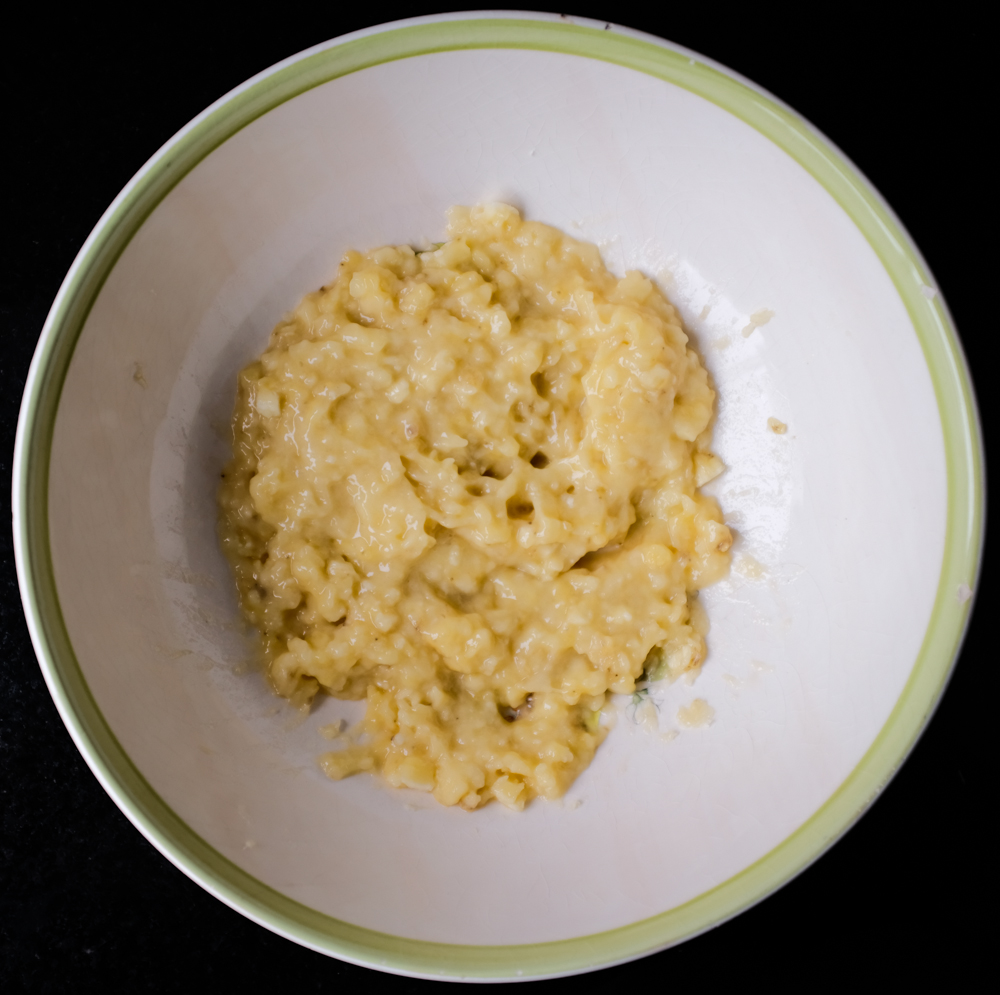
- Add sugar and oil to mashed bananas. Mix thoroughly.
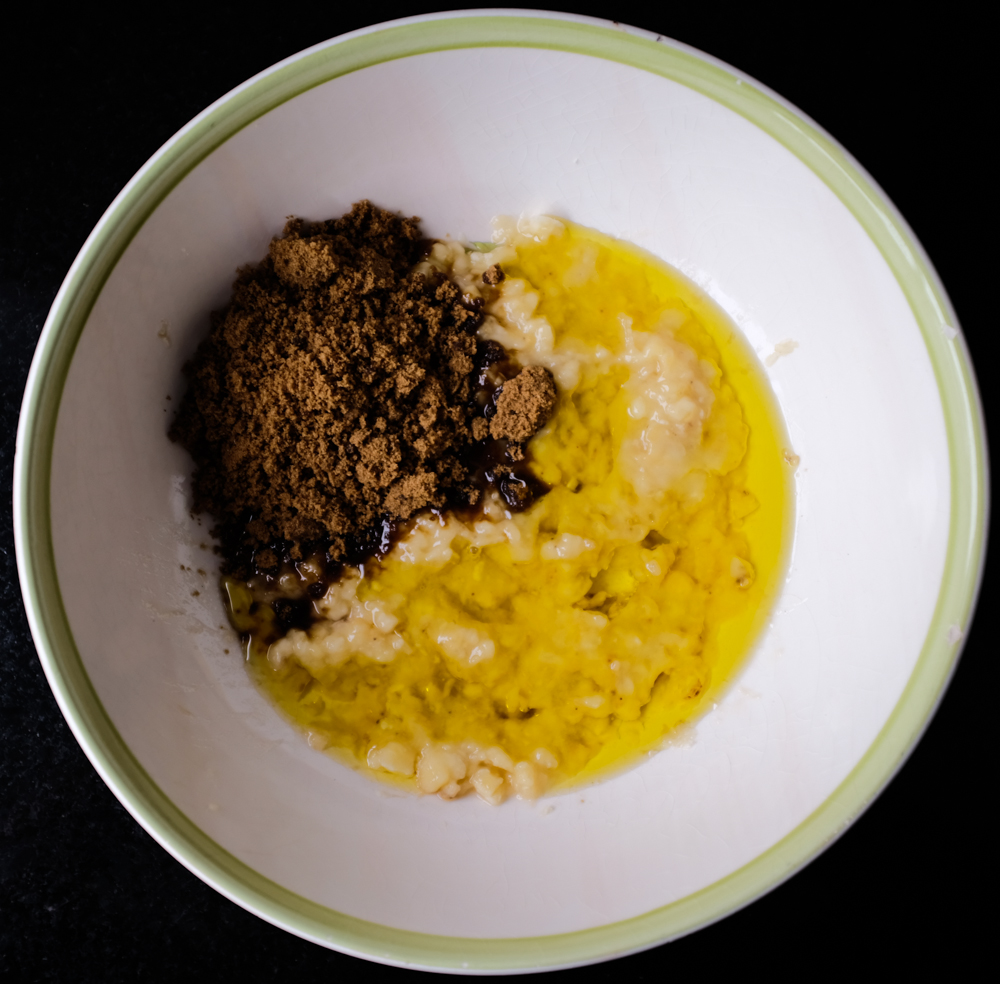
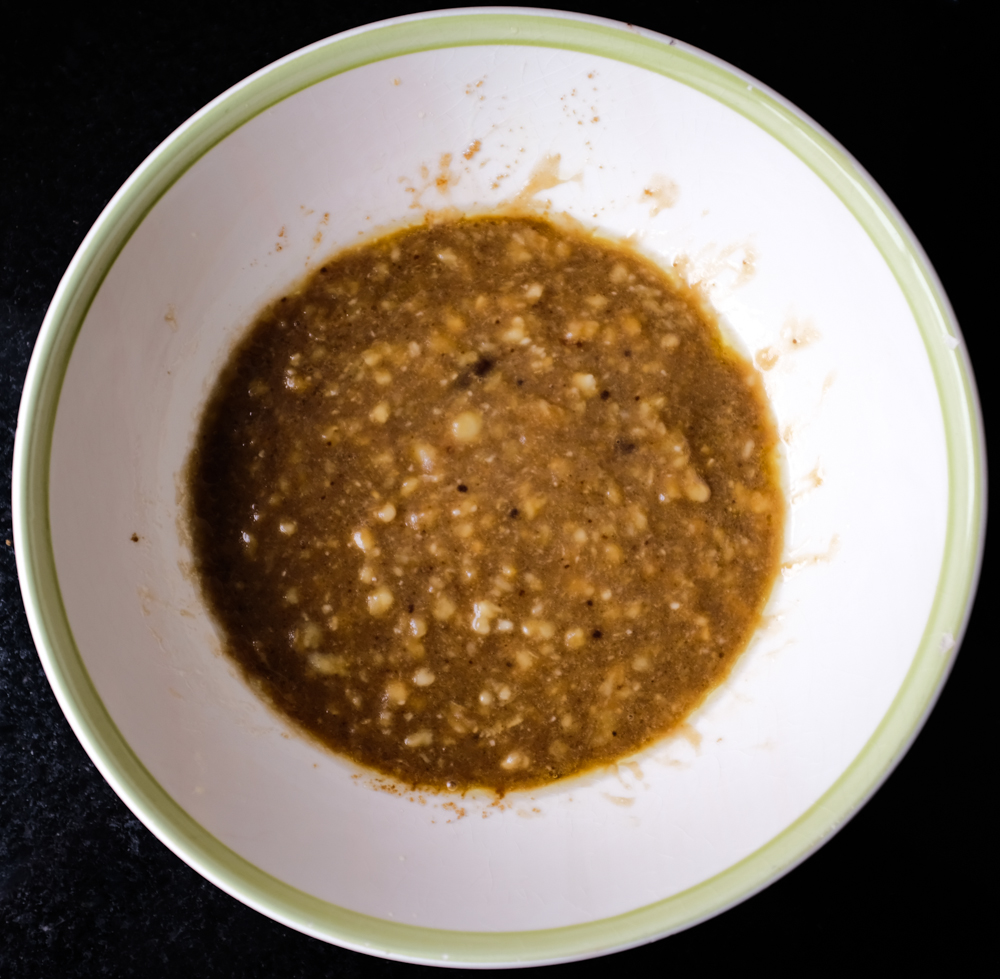
- Add flower.
- Add baking powder, cinnamon, and salt on top of the flour.
- Distriute/mix dry ingredients on top of mixture quickly before mixing them into the banana/oil/sugar. Only mix just enough to ensure that all of the ingredients are properly incorporated and distributed – probably less than a minute – as mixing too much can lead to insufficient rise. It should end up being thick and dough-like.
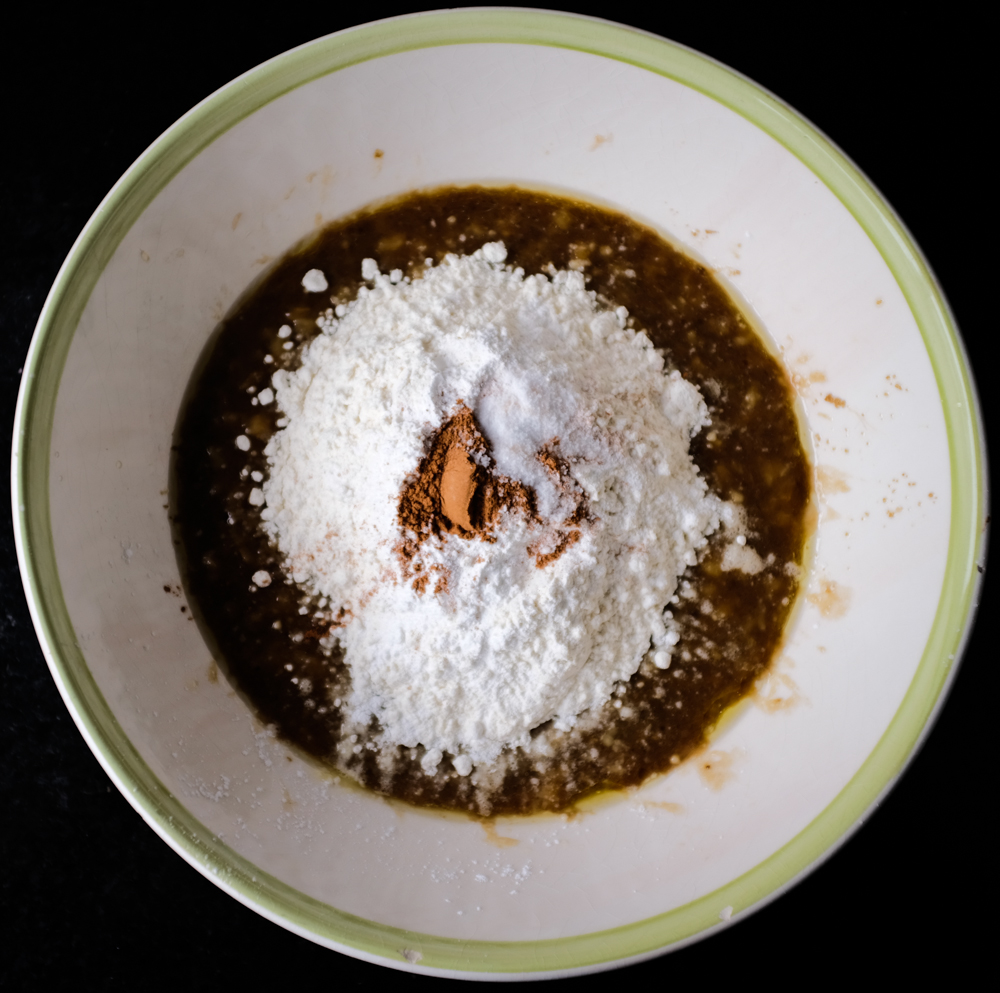
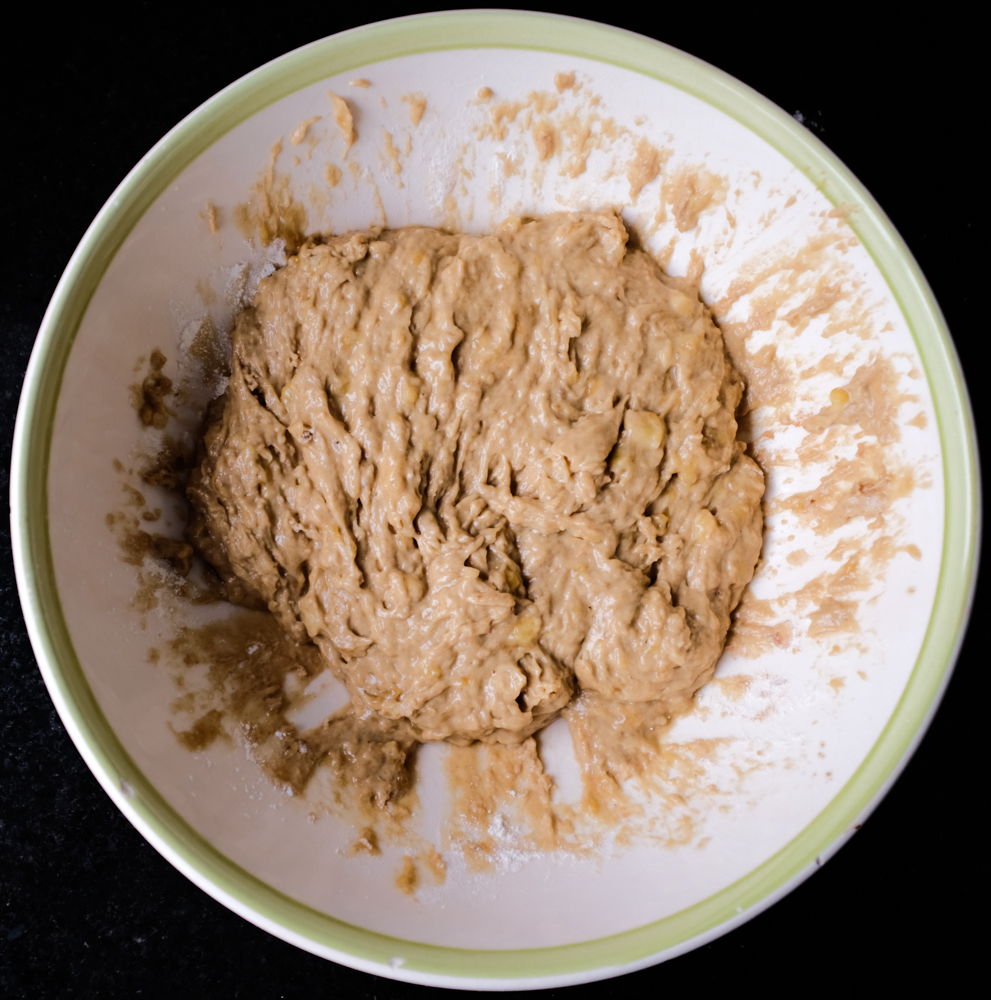
- Add nuts and cranberries and gently fold them intot he mix. Avoid over-mixing.
- Grease your mold with coconut oil that is solid at room temperature.
- Evenly spread the batter throughout the dish.
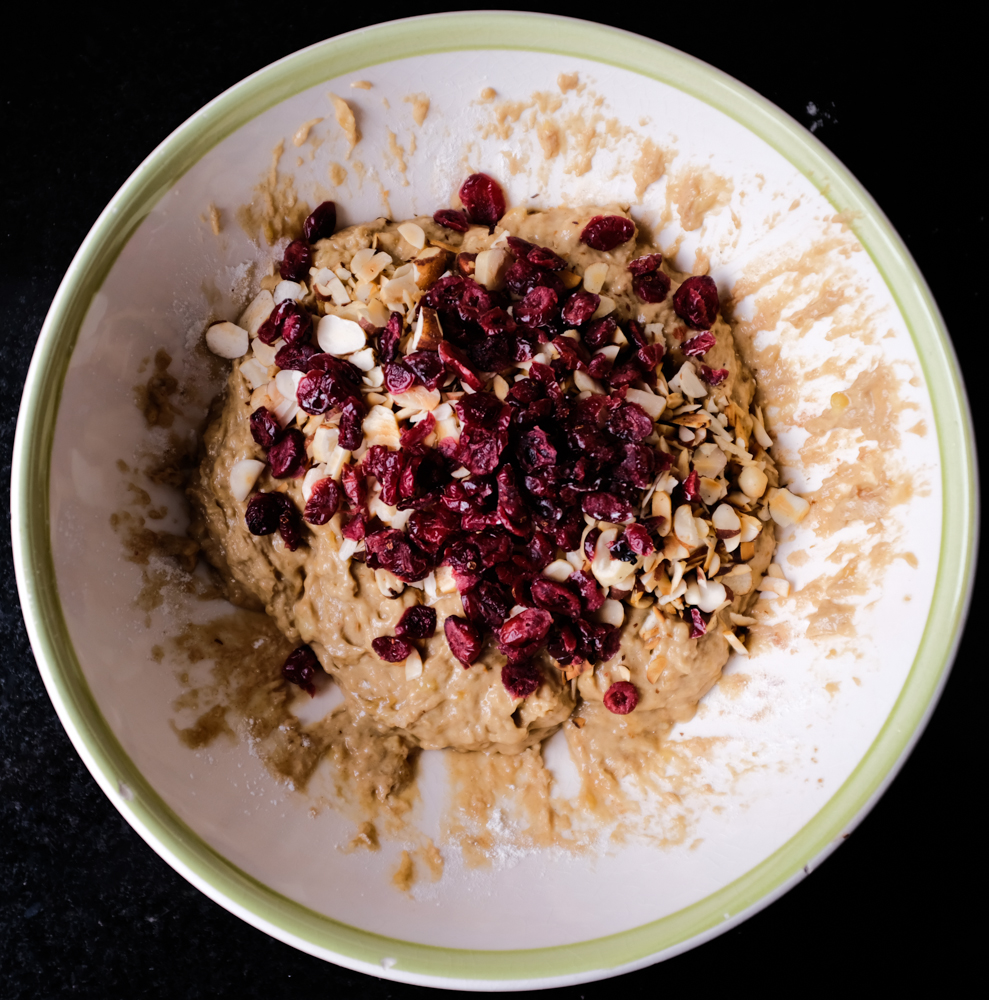
- Toss it in the oven. Bake for around 40-45 minutes – don’t forget about the Virigina Woolf quote.
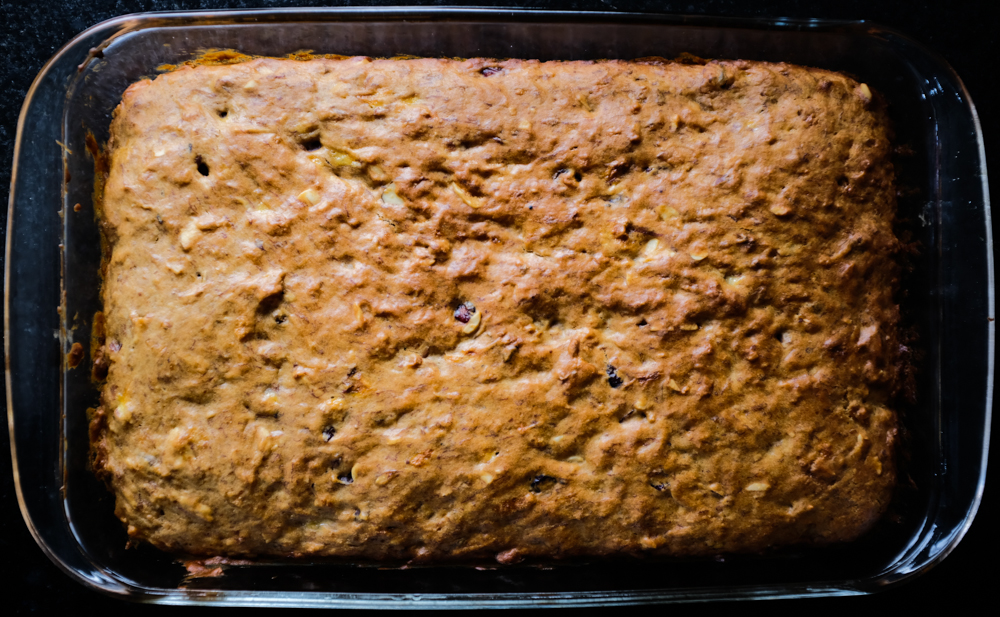
- Remove from the oven and let rest in the dish for a few minutes.
- Flip upside down and remove bread from tray to let the rest of the crust breathe.
platano peace curry

There are curries from countless countries around the world, which makes it difficult to define what exactly is a curry. In my experience, there is only one characteristic that is common to all: a rich and complex flavour that is built by combining multiple spices and ingredients that complement one another. As these flavors merge together, the whole is more than the mere sum of its parts, thus the curry is an invitation to creativity and a celebration of diversity. Do not concern yourself with following the measurements or the steps of this receipe too closely. Whatever you do it will turn out delicious.
I have never eaten the same curry twice, for it’s not the same curry and I am not the same man.
Time:
1-3 hours
Ingredients:
Lentils:
- 500g lentils (~1 pound)
- 1 tsp salt
Fried plantains:
- 3 ripe plantains
- 2 tbsp vegetable oil (more may be necessary)
Curry:
- 2 tbsp olive oil
- 6 large garlic cloves
- 2 thumbs worth of ginger root
- 2 medium sized red onions
- 1/2 tsp cumin seeds
- 1/4 tsp cinnamon
- 5 bay leaves
- 2 tsp cayenne chili powder
- 3 tbsp high quality curry powder. I like Madras curry powder.
- 1 tbsp tumeric
- 1 tbsp garam masala
- 1/2 tsp salt
- 3/4 cup tomato puree/sauce. I use Mutti Pomodoro. 1/4 cup tomato paste can be substituted.
- 1/2 can coconut milk
- Cashews (garnish)
Steps:
- Put on some jazz and pour yourself a glass of wine.
- Start your rice cooking. Make however much you will need to accompany the curry.
- Start your lentils cooking. In a pressure cooker add 500g of lentils, 9 cups of water and 1 tsp of salt. Once the pot reaches high pressure, cook for 9 minutes. If you do not have a pressure cooker, add 500g lentils, 6 cups of water and 1 tsp of salt to a pot. Bring to a boil and then simmer the lentils for 20-30 minutes, adding more water if necessary. Do not let them turn to mush – you can cook them more once they are in the curry if necessary.

- Slice plantains to create pieces that are roughly .5cm (.25 inch) thick and medium sized for frying.


- Add 2 tbsp of vegetable oil to pan on medium-high heat. Fry all of the pieces of plantain, flipping them occasionally to carmelize both sides. Add more oil if necessary.

- Place fried plantains on a plate and set the plate aside once all of the platains have been cooked so that they can cool.
- Draw the plate back towards you momentarily. Eat a few of them, then return it to its former location.
- Julienne the onions. Crush and then dice the garlic. The ginger can be finely grated, finely chopped, or left in large, easily avoidable or consumable chunks.

- Add 2 tbsp olive oil and 1/2 tsp of cumin seeds into a large pot on medium heat.

- Once the oil starts sputtering a bit, add: garlic, ginger, onions, cinnamon and bay leaves.
- Bring the heat to low-medium to avoid burning the garlic. Cook for around 20 minutes until the red onions have softened completely.

- Add all remaining dry spices: curry powder, garam masala, tumeric, cayenne pepper. Cook for 1 minute while mixing the ingredients together.


- Add: 1/2 cup of coconut milk and 3/4 cup tomato sauce or 1/4 cup tomato paste.

- Add lentils and throughly mix. Make sure that the heat is not too high. Continue stiring occasionally. Add more water if it is too thick.

- Chop up the fried plantains into smaller pieces.

- After the curry and lentil mixture has cooked for between 15 minutes and 1 hour while you continue drinking, stir in the fried plantains.

- Cook for five more minutes then turn off heat.
- Don’t eat the curry while it is too hot, the flavors will not fully come out.
- Serve with rice and cashews crumbled on top.
pandemic chai tea

Ingredients:
- 1/2 can of coconut milk
- 2 chunks of fresh ginger root larger than your thumb
- 1 chunk of tumeric roof at least the size of your pinky
- 4 black tea bags
- 1.5 tsp allspice
- 1 tbsp, 1 tsp good quality cinnamon
- 1/8 tsp cayenne pepper
- 1/8 tsp black pepper
- 8 cardamom pods
- 2 tbsp brown sugar
Process:
- Put 1 liter of water in whatever type of pot or pan that suits your mood. Maybe that shiny silver one hasn’t been out in a bit? Set it on a high flame.
- Examine the digits of the ginger roots and select a piece that has a volume that is at least equivalent to that of your two thumbs. Select a piece of tumeric root that is also at least the size of your pinky. You do not need to remove the skin from the either, but if the only other option is to look at macabre statistics or read government declarations that you think you don’t understand because you are not a native speaker but that you will later find out that no one understands or become overwhelmed as you read first hand accounts of oxygen tank shortages in the jungle and/or in Lima, then it is recommended that you methodically remove the skin from both in a time consuming fashion.

- Slice the ginger and tumeric into large, thin slices. This will allow the water to easily draw out the flavor and will ensure that you can easily discard them when drinking the tea. Throw them into the pot once finished.
- While you wait for the pot to reach a roaring boil. After months of being trapped in your apartment alone by yourself, you have come to see that you alone have control over how you are going to spend your time and consequently how this day is going to go.
- Take the dull knife that you keep vowing to replace or sharpen, and use the blade to cut or crush the cardmom pods one by one. The seeds inside should be sliced or cracked.

- Add allspice, cinnamon, cayenne, black pepper and cardamom pods into the pot. Stir them in and then use your hand to waft the steam towards you face and breathe deep.

- Go and practice juggling for a bit. After 20 minutes, turn off burner.
- Add black tea bags. Dangle and agitate them in the pot for 2 minutes before taking them out.
- Add in sugar. Stir to make sure that all of it dissolves. Add more to taste.
- Pour in the coconut milk. It is going to seperate and look gross, but it tastes better and you don’t have to think about cows when you drink it.
- Stir the pot and pour yourself a cup of tea.
- Stay away from all electronic devices.
- Sit down somewhere comfortable, preferrably near a window.
- Sip the tea and be wherever you are.
ciudad grande, cielo pequeño
As I write the only sound that I hear is the dull roar of rocks perpetually tumbling in the surf. A month and a half ago the energy of the city was such that my windows rattled day and night as a steady stream of traffic passed below. Then on a Sunday night the quarantine was declared and on Monday the world was different.
I awoke on the first day to a chorus of birds in the trees that line my street, but gone was the old man who wheeled a cart full of fresh bread around, the call and response of taxi horns and the knife sharpener who roamed the streets whistling with his grinding wheel in tow. The rapidity with which public spaces had cleared created a surreal anxiety-inducing ambiance. I imagined myself in the empty streets of a Western with an invisible enemy that would only fight at a range closer than ten paces.
In every crisis, I imagine that there are moments that would appear tranquil to an outside observer, but the individuals who are living those moments rarely feel anything resembling internal peace. As the city slowed, my mind was still attuned to its now absent frantic rhythms, but there was nowhere to go and no way to expend that energy. My lesser developed lizard brain told me to flee or fight, but prefrontal cortex worked assiduously to keep me at home. I found myself indulging somewhat in hoarding impulses (I went to the store for wine and peanut butter), calling long lost friends and reading the news incessantly. I found myself pacing the apartment, organizing and cleaning to keep myself occupied. I couldn’t concentrate on work tasks and I couldn’t read the stacks of books that I dreamed the week before of having time to read. Writing was out of the question.
Then I got an unexpected text message – the other residents of my building somehow managed to get my phone number and included me in a group chat. In the three months that I had lived in the building, I had only exchanged pleasantries with a few of the elderly couples that live here. I knew not one of their names. There was an effort at coordination and overall concern for other people in the group, but I became focused on the way that the crisis appeared to have activated their base instincts: they shared videos – without condemning them – of the military brutalizing people for violating the quarantine restrictions, propagated rumors of snake oil cures, mused about the prospect of a crime wave from jobless hoards, demanded that all surfaces be doused in bleach each day, declared that no resident should leave the building unless it was a true emergency, mounted an aggressive inquiry after a dog turd of unknown origin was discovered near the front door and idly speculated about the couple across the street whose kids cry constantly. I felt like these people were panicking and I worried that it could turn against me. I vowed to go out each day for a walk and to continue seeing my friends.
I did not dare say anything as I hoped to maintain a low profile. I contemplated pretending to not speak Spanish if they tried to engage me any further. It all reminded me of an expression that is commonly used in the rural areas of Peru:
“Pueblo chico, infierno grande.”
From the roof
Almost immediately my apartment felt confining but as soon as that feeling arose, a thought came forth from the ether in response: maybe there was a way to get access to the roof of the building?
I furtively ascended the stairs to avoid creating suspicion and arrived at the eighth floor. There were two doors – one was clearly for an apartment. I gently tried the other knob and it opened. The roof! The sun was radiant and had transformed the color of the Pacific into that of the Caribbean. I carefully repressed the joy that I felt with the covetousness of a child who has just discovered something and wants to make sure no one else finds out about it. I marveled at the view as I paced the abandoned roof amidst broken wires, pigeon shit and scattered pieces of concrete. I swept the roof and found a camping chair with an awning at the grocery store that I began sitting in for hours each day.
As the days went on, I gradually adjusted to the slow and repetitive rhythm of the quarantine. I found myself far more present and conscious of my environment, especially the living things that I shared the space with. What I remember from this solitary week on the roof: a mass migration of seabirds bobbed and weaved past. Vultures perpetually stood perched on corners of nearby buildings like gargoyles. Boobies dive bombed and feasted upon a shoal of sardines that a pod of dolphins encircled. I saw a Grey squirrel – a recent immigrant to Peru – for the first time running on the powerlines in my vicinity.
In my apartment
I realized that I wasn’t alone in my apartment either. I share the space with one variety of fly on a full-time basis and two others that come and go as they please. The family of permanent residents, which have laid claim to the bathroom, is quite adept at ignoring me. They would let me get so close with my eye that it blurs without even the slightest reaction. Nor were they willing to respond to English or Spanish – I wondered if I was being hoisted by my own petard. The occasional lonely mosquito or moth was drawn in by my bedside light and arrived to provide me company through the night.
I began eating my breakfast standing up, because I spend the rest of the day sitting down. I stand in front of the window, looking out upon the street and the building across the way. I just watch each day begin without any expectation that it will be very different from the last.
One morning I heard a voice shout in English, “Do you live here or are you stuck here?”
It was the woman that lived across the street. I answered her and we introduced ourselves.
I had been wondering about her as I had only seen her by herself in the apartment since the quarantine started, but there was always a man with her before. I asked her, “How are you doing? Are you getting by alright by yourself?”
I instantly liked her when she defiantly responded, “Hah. I have never been busier. I am just writing all day.”
These meetings have continued. I eat my breakfast and she reads on her balcony. Sometimes we just wave to one another and say hi, but other days we talk about writing (she is a screenwriter), about her husband who is trapped in Minneapolis, about how our lives have changed and about how beautiful the city has become. We are only occasionally interrupted by the passing of a car, something that now seems like an insufferable intrusion.
On the roof
During the second week of the quarantine, I was drinking wine on the roof when Giaconda from 503 arrived with her daughter Alejandra. I knew from the memos around the building and the group chat that she was the president of the building. I assumed that I was going to receive a lecture for being on the roof; I assumed a standoffish posture. This did not come to pass. We chatted briefly in English and my plan to feign ignorance of the Spanish language fell apart. Then a few days later, another couple – Jorge and Luisa – arrived with a bottle of wine just before the sunset. Then Andrea and Jose came with beer and a joint. Then Pierre, Rafael and Aldo with his boxer. I put faces to nearly every name from the group chat over the coming days.
When Pierre arrived, he asked a few of us on the roof – with a straight face – “Do you know what rule I have implemented to make sure the virus doesn’t make its way into my apartment?”
No one said anything. I awaited an answer about dousing your doormat in bleach or putting soap under your fingernails.
He said with a grin, “Whenever any of my girlfriends come over, I make them take their clothes off at the door.” We had entered a different space than the group chat.
The quarantine has entered its sixth week and a constantly varying group of us has continued meeting on the roof each evening (while continuing to practice safe social distancing of course.) The crisis managed to lift the depressing grey blanket of pollution from the city, but it also parted the curtain upon a world that I did not know could exist. A space was created on the roof in which complete strangers gather in this socially fragmented city for the simple joy of having company. Sometimes we merely sit in silence and inhale the rich smell of the sea being swept up off of the bluffs. When a new piece of bad news surges forth – a significant jump in cases or hospitals reaching their capacity – the fear that grips everyone’s lives is palpable. But most of the time we have conversations that veer off into the intimate and deep as we discuss our families, our passions, our childhoods and our plans for what we will do if we can ever do it again.
One night I went up to the roof and Rafael was already up there looking at the stars.
I mused aloud – “There is probably no one alive that has ever heard Lima this quiet. Maybe 80 or 100 years ago it was like this.”
Rafael thought about my remark for a moment before responding – “There were long periods of curfew when I was young, during the years of terrorism. It was different back then, far quieter even, because you might get shot for setting foot outside. We would have parties that were called “de toque a toque” (from curfew to curfew) because you would start drinking and dancing when the curfew started at night and continue until it ended the next day.”
This conversation led to many others about what Peru used to be like. I am reminded how the majority of people in this world have endured significant crises beforehand. This country only emerged from decades of violence and economic hardship at the start of the millennium. These people who are decades older than me have endured food shortages (there were shortages of even basic necessities like flour, sugar and oil) and car bombs in the streets (Both Rafael and Giaconda have friends who lost eyes due to flying glass). I learned that the cross that shines brilliantly over Lima is constructed out of downed electricity transmission towers that the terrorists dynamited decades ago to cut power to the city. These people are resilient and take pride in handling the crisis stoically through solidarity, humor and mutual aid.
I look forward to the sunset each day, to passing time with these people that I would never have had time for otherwise. It creates a sense of normalcy and comfort amidst isolation and chaos.
In the streets
Each night, the windows and doors of the apartments that line my street slide open and the silence of the city under quarantine is shattered by raucous applause, music and piercing whistles. It began as a means to show our gratitude for everyone that is risking their life to keep us safe, healthy and fed, but I think that the nature of it has changed over time.
I read articles about the resolve fading in other cities as the quarantine drags on; that fatigue eventually silenced the streets. This has not happened in Peru. And in my case, I have become even more dedicated about the practice as time has passed. The cavalier attitude that I had at the start of this crisis has been replaced by empathy for the stress that my neighbors are enduring and a serious concern that I could potentially put one of them or all of them at risk through my actions. The nightly applause is a small gesture that I feel enables me to acknowledge and express my gratitude for the efforts and sacrifices that my neighbors are making to ensure our collective well-being. We are not alone in this.
quarantine day 41 – lima vacía
The destructive rhythms of Lima have ground to a halt. I lay on the couch, sit on the floor, pace on the concrete roof, and dream of floating through a redrock desert on a swollen river; of walking though a verdant forest under towering trees; of sitting on a ridge line looking out upon endless ranges. I don’t want to go back.





quarantine day 40
Mask behind the wheel, beetle on empty highway. Is it a surprise?
After each crisis, always more complexity. When will it collapse?
quarantine day 37
Bare feet back and forth
An infinite blue expanse
just beyond my reach.
¡locked down! neighbors, poo, rubber masks and bocci
It is important for a writer to write about their world with the idealistic hope of arousing the most rarified elements of the human spirit – understanding, empathy, compassion, curiosity – in a reader by providing a window onto that world. Welcome to my balcony caballero.
On Easter Sunday I was reminded of the many countless people around the world performing selfless acts of kindness by my neighbor Linda. She knocked on my door early in the afternoon.
“What kind of mask have you been using?” she enquired. I gestured over to my table and said, “I just have one of the cheap ones from the market that probably don’t do too much.”
“I made these for everyone in the building. Take one of these so that you are safe,” she said with a smile.
She recounted that another resident of our building had ordered a 50 pack of surgical masks, but they arrived and much to her disappointment seemed to be of dubious quality. She rapidly and correctly identified the problem: they allowed too much air to pass through. After multiple experiments sewing in various types of fabric that would filter the air better and limit its free flow, she came across a vinyl shower curtain type material that she had left over from an interior decorating project that she had done years before.
I took the mask and examined it closely, scrutinizing the impermeable rubber layer.
She touted the benefits, “It doesn’t allow anything through. I even tried it with water, and it didn’t allow even one drop through.”

“I hope it allows air through,” I said politely.
“My husband said the same thing,” she said dismissively.
She is right that wearing a mask that doesn’t allow any air to pass through it does make it 100% certain that you will not contract COVID-19 through your airway.
Several of my neighbors would have appreciated these masks over the previous days as tensions rose as rumors spread through the building of a shocking development on the first floor that was compromising all of our health, a sanitary crisis. These rumors in the coming days would lead to baseless accusations being flung around that would pit neighbor against neighbor. It appeared to have been seemingly intentionally left there, carefully placed in the middle of the doormat for maximum effect. Wild theories were put forth, including that someone entered from outside – adding to the concern of contagion. It wasn’t clear if the gate was left unlocked in this theory or if the intruder bypassed the electric fence that surrounds the building. The inferno was stoked by the fact that the building’s management was safely ensconced in their homes due to the quarantine rendering revision of the security cameras impossible.

The pulse-quickening suspense of this interminable wait combined with the restrictive nature of my newly acquired mask drove me to the roof of the building. To play bocci. Without a mask. As I ascended with my friend Olga, we passed one of my neighbors that I hadn’t met beforehand named Pierre. We exchanged pleasantries and carried on our way.
In the midst of our bocci game, Pierre joined us on the roof to introduce himself.

“Hi – Im Pierre.” We introduced ourselves. “I live in apartment 302. I am a photographer and I am losing all of my inspiration being trapped in the building with no one to shoot. And when I saw you guys pass on the stairs I thought that it would be great to take photos of you. We could wait for a day with nice light – like today – and just do something casual. Let me show you my work on Instagram to see if you are interested.”
We scrolled through his photos. All of them were of sultry women dressed in lingerie giving the camera provocative glances, well unless they were bent over in a way that might lead to a neck injury if they tried to look into the lens. I didn’t know what to say, so I didn’t say anything. Thankfully, Olga carried the conversation by changing the subject and switching to French. We exchanged contact info, but I don’t think that Pierre wants to have a photoshoot with me.
living in my underwear and conversing with flies
My mental state ebbs and flows. Never before have I had the chance to run an experiment like this, to sit for weeks on end in the same place, largely determining what each second of my day looks like. These conditions can precipitate out the good and toxic elements that flavor each day. This is what it looks like.
The city is quite quiet. There are no cars, no people after 6pm. A voice speaking any language other than Spanish or a car that sounds abnormal bring me to the window to look out. I have seen five different species of bird in Lima that I did not know existed beforehand – I wake up each morning to their raucous calls and songs as if I am in the jungle. These emerald and cerulean birds were always here, they didn’t migrate with the virus, they were simply rendered mute by the urban machine. I live several blocks from the beach and my bedroom now sounds like I am on the beach each night; I can tell when a swell comes in from how loud the waves are as they tumble the rocks along the coast.
It has been impressive how quickly the measures that we are enduring have become reasonably normalized. The initial discomfort that resulted from the repressive confinement has faded and has been replaced by a mere ennui. There have now been multiple days in a row when I haven’t left my apartment and haven’t really felt much of an urge to do so. Every couple of days the government imposes even more draconian policies and each time it bothers me less. We are at the point where I can only legally go outside during two days this week – just for groceries and while wearing a mask. These are strange times though. Everyone wears masks. We all avoid one another in the street. No two people walk together. I see a video online of a body or person being removed from a building two blocks away from me on a stretcher enclosed in a clear plastic bubble.
Each morning I get up to meditate. I feel inordinately sensitive to everything that happens around me. I imagine that this is a direct result of the sensory deprivation that I am experiencing. I observe the doves that roost outside my window as they gather materials to build their nest. I watch the flies and bugs that live in my apartment with intense curiosity. I slowly approach them to avoid spooking them, bringing my eye close for a macroview. I have even caught myself speaking to them, in jest I tell myself, but maybe this is how insanity begins?
My mental state is directly correlated to how much I stare at the amidst whirling media vortex that gathers up – often without regard for the dubiousness of its origin – and spews forth medical reports without sufficient explanation, information about unproven cures, geopolitical propaganda related to the crisis, anecdotes from frontline workers, reports of shortages, recipes for quarantine comfort foods, reports of surpluses, reports of boredom, reports of exhaustion, reports of bodies in the street, fun craft projects, discussions of how to dress for online meetings, reports of stock markets surging, and reports of economies collapsing. Charlatans become scientists. New comedic geniuses arise. Politicians proclaim themselves doctors and epidemiologists. Those pandering false hope become heroes. Doomsayers become prophets.
I have started having frequent nightmares about the virus, earthquakes and the death of loved ones. I woke up screaming once this week. My quotidian existence though is relatively mundane. Weekends are a meaningless concept. I regularly lose track of what day of the week it is as it is irrelevant. I do little laundry as most of my days are spent in my underwear or my pajamas.
I met a girl – Olga – a few weeks before the quarantine started that was here in Lima for a work project for several months. We are very different people, but when the quarantine was imposed, we found ourselves trapped in our respective apartments alone. Her work promptly laid her off and she is working to find her way back to Santiago. We began visiting one another to have company, moving between one another’s apartments by taking specific routes on which we are less likely to encounter police with our addresses memorized and grocery shopping bags in hand. We now spend several days each week together cooking, reading, watching movies, drinking wine and helping each other to navigate these strange and difficult times. We have become close friends, forced together under the circumstances to openly share our lives with on another.
I watch other countries with horror as I sit feeling relatively safe in Peru due to the stringent measures that have been imposed. Ecuador serves as a reminder of what could happen here. I find myself thinking about exit strategies for Peru, about political/economic/medical measures to strike a manageable balance between cases, medical resources, and the need for a functional economy. I wonder about what travel will look like three months from now: without a vaccine how can global travel function?
These are strange times in good ways as well. Each evening I head up to the barren concrete roof that caps my building to watch the sunset. A few nights ago, there was a rare clear sky above Lima. Olga and I finished a bottle of wine as we looked up at the stars and fantasized about what we will do and where we will travel when this is all over. We talk about how good we truly have it in this very moment, that it is all just a matter of perspective.
